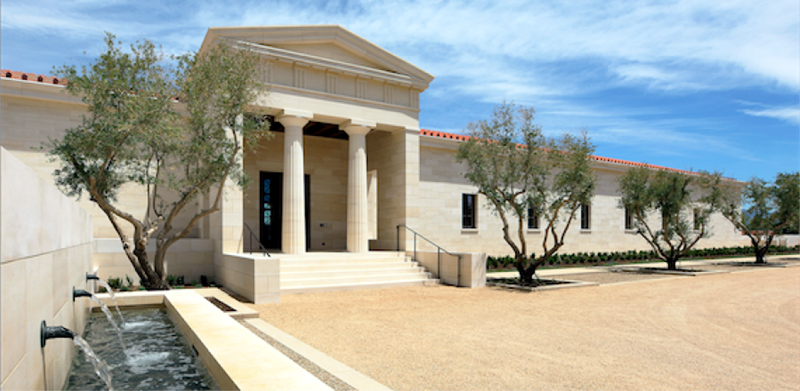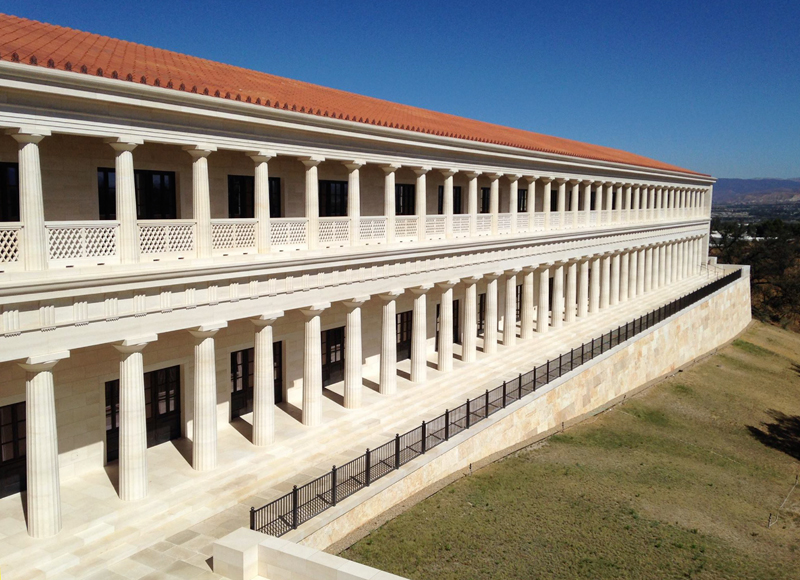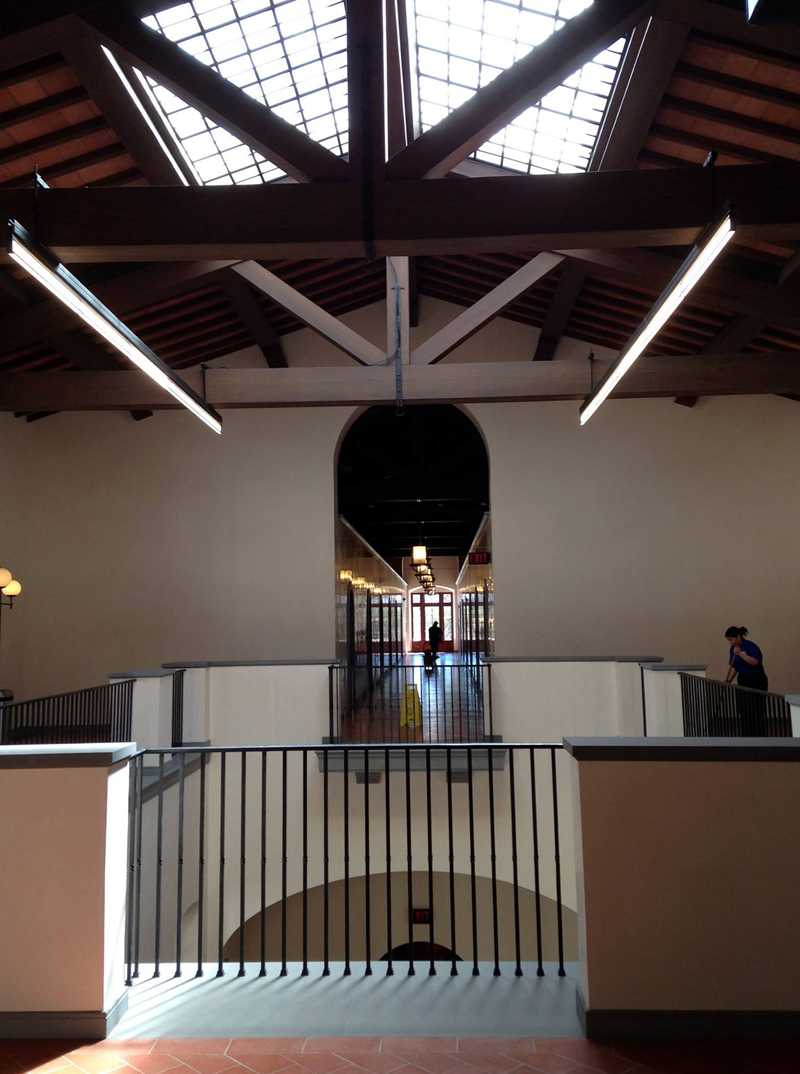
Click to enlarge.
If you look east while driving along Interstate 5, between the Valencia Blvd and McBean Pkwy exits, there is a structure that looks like a Roman monastery. Impressive in scale, imposing in size, noble in ambition, the work that will be done in the facility will live forever. There is preservation, restoration, and appreciation, all in one place. It will be a place where old meets new and artifacts will be brought to life through the wonder of film.
The Packard Humanities Institute, in partnership with UCLA, have built the second largest film warehouse and restoration facility in the U.S. right here in Santa Clarita.
David Packard, co-founder of Hewlett-Packard, established the Packard Humanities Institute in 1987 to catalogue, preserve, and make accessible research of the Humanities to the public. He donated $160 million for the construction of a film library that specialized in preservation and restoration. The Packard campus, as it would become known, is the second-largest private-sector gift to the federal government, with the Smithsonian Museum ahead of it.
Now, Packard has built an archive on the West Coast which will absorb collections from local production companies, university archives and his own collection.

Photo by Ron Kraus | Click to enlarge.
|
The PHI Film Preservation facility will be the largest archive on the west coast, housing more than 400,000 films accumulated from Paramount Pictures, Warner Brothers, Columbia Pictures, 20th Century Fox and Republic Pictures. The library will also include the massive Hearst Metrotone News Collection, consisting of virtually every newsreel made by the Hearst Media Corporation from 1915-1975.
The facility, which is built on a 64.5-acre site amid oak trees and hillsides, is comprised of two parts: the collection storage and the main building. The collection storage contains temperature and humidity controlled storage vaults, collection services, loading dock, film lab facilities, and a central plant. This section is mostly underground and will be closed off to the public. The main building houses the preservation labs, work rooms, preservationists' offices and administration functions. The center will contain laboratories, storage for film and audio media, gallery exhibit space and a small theater for educational events, plus a larger theater for screenings to the public.
However, the foundation has not specified exactly how the facility will be available to the public.

Photo by Ron Kraus | Click to enlarge.
|
"There will be a coordinated press release between the PHI and UCLA where we will address all inquiries regarding public use and educational opportunities once the facility is operational," said Patrick Loughney, former chief of the Packard Campus conservation center and current project manager.
While the majority of space will be off limits to the public, Santa Clarita has added an extraordinary cultural institution that will foster public interest in film through screenings and exhibitions. It will be a resource for cinefiles and casual moviegoers alike.
By comparison here is what the Library of Congress Packard Campus' operations look like: the Campus hosts a regular series of film and television programming free to the public, according to the Library of Congress website. It shows everything from nitrate film to modern digital cinema. In their mission statement, one of the main goals of the institute is to collaborate with educators, filmmakers, television historians and publishers to create new media productions and foster creative reuse of the collections. The collection is used to inspire as well as to celebrate the past.
Jason Crawford, the marketing and economic development manager for the city of Santa Clarita, said the UCLA archive will add to the existing educational facilities in that part of the city. "We know having them there between CalArts and College of the Canyons makes that a great corridor," he said.
In the 20th century the United States produced more movies than the rest of the world combined. Why is film worth preserving? "Motion pictures have a rich history in the U.S. and are part of the life blood of American culture," according to Loughney. "Movies produced in America since the 1890s are a mirror of the society and culture of the times. They are part and parcel of who we are and what we are today."
"Many people consider movies to be the greatest cultural achievement the U.S. has contributed to the world," said Gary Petersen, Chair of the Cinema Department at COC. "They had an important force in shaping what we are and must be preserved for future generations."





